ISSN ONLINE(2278-8875) PRINT (2320-3765)
ISSN ONLINE(2278-8875) PRINT (2320-3765)
A. C. Birajdar 1, M. G. Poddar 2
|
| Related article at Pubmed, Scholar Google |
Visit for more related articles at International Journal of Advanced Research in Electrical, Electronics and Instrumentation Engineering
This is an attempt to maintain soil moisture at desired level for better yield, by taking control action using Radio Frequency transceiver technique. This avoids the problems due to connecting leads. At remote location a sensor is placed in soil at root zone of the crop. Location of the sensor from the surface varies as per the type of crop. Soil moisture is measured along with related electronics. Soil moisture data is sent through UHF signal and the same is received at the receiving station. The system was designed and tested for different inputs
Keywords |
| Soil moisture, RF Signal, Transceiver. |
INTRODUCTION |
| The availability of adequate food and fiber for future generations will depend greatly on our ability to manage and conserve our soil water and air resources. To meet these responsibilities, it is necessary to improve our ability to precisely and accurately measure variables, which affect the status of these resources. Knowledge of the soil water is of primary importance in hydrology, soil and irrigation science, civil engineering, recreation, and many other areas where people, soil and water interact. The ever-increasing competition for water and over drafting of groundwater resources dictate that irrigated agriculture, which diverts the greatest amount of water must increase its irrigation efficiency. |
| Here is an attempt made by using advance technology to improve results i.e. optimum crop growth is achieved in which the RF transceiver technique is used to control the soil moisture. |
| Keeping in view, the economic viability of the proposed system, a large number of farmers would co-operatively use a single central station for control and management of the drip irrigation system. Such central system has required database for optimum irrigation profiles for the various crops in different zones. |
METHODOLOGY |
| The following elements are used in our system: computer, sensors, solenoid valves, transducing circuits, A/D (analog to digital), D/O (digital output), interfacing board, microcontroller and transceivers. The hardware configuration is as shown in Fig. [1]. |
| Measurement of soil moisture is achieved by Gypsum block, which is specially designed. It has a principle of change in resistance with soil moisture inversely. A circuit called actuating and sensing unit is designed to provide and interface between soil moisture sensor and A/D converter. The sensor’s DC voltage output is proportional to the resistance of the sensor and its functional block diagram is as shown in Fig. [2]. |
| The AC (alternating current) wave generator provides AC voltage to activate soil moisture sensors. A reference resister with known value is in place of soil moisture sensors, when sensors are not measured. This provides a means to calibrate the circuit. |
| The obtained results from actuating and sensing unit are transferred to the central station using RF transceiver module (CC1000), which has microcontroller compatibility. The central station has huge data base and its beauty is that it increases the data base. Based on this, the appropriate control action is taken for the crop growth. |
| CC1000 is single chip very low power RF transceiver. The module is mainly intended for the ISM (Industrial, Scientific and Medical) and SRD (Short Range Device) frequency bands at 315, 433, 868 and 915 MHz, but can easily be programmed for operation at other frequencies in the 300 to 1000 MHz range. Very few external components are required for the operation of CC1000. An application circuit is as shown in the Fig. [3]. Components values are shown in table 1. |
 |
| CC1000 is configured through a 3-wire interface (PDATA, PCLK, PALE). There are 28 8-bit configuration resisters, each addressed by a 7-bit address. A Read/ Write bit initiate a reception and transmission operation respectively. |
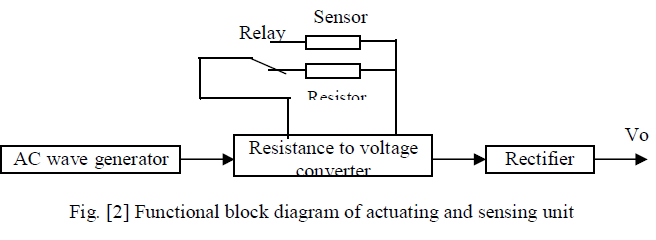 |
| To obtain CC1000 in transceiver mode with current consumption (receive mode: 7.4 mA, transmit mode: 26.7mA), power consumption 10mW, at frequency 433 MHz and data transmission rate 76.8 k Baud we configured the 28 8-bit resisters as shown in table 2. |
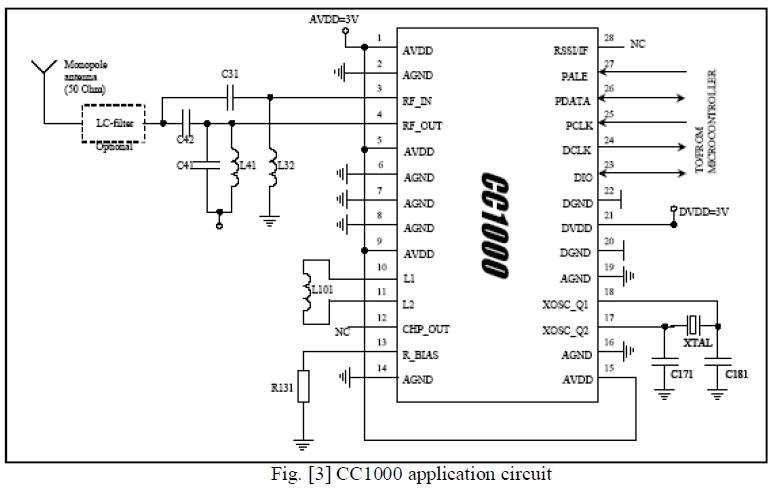 |
| As far as the interfacing is concerned with microcontroller it has serial data transmission and receiption. The configuration details with timing diagram are shown in Fig. [4] and Fig. [5]. |
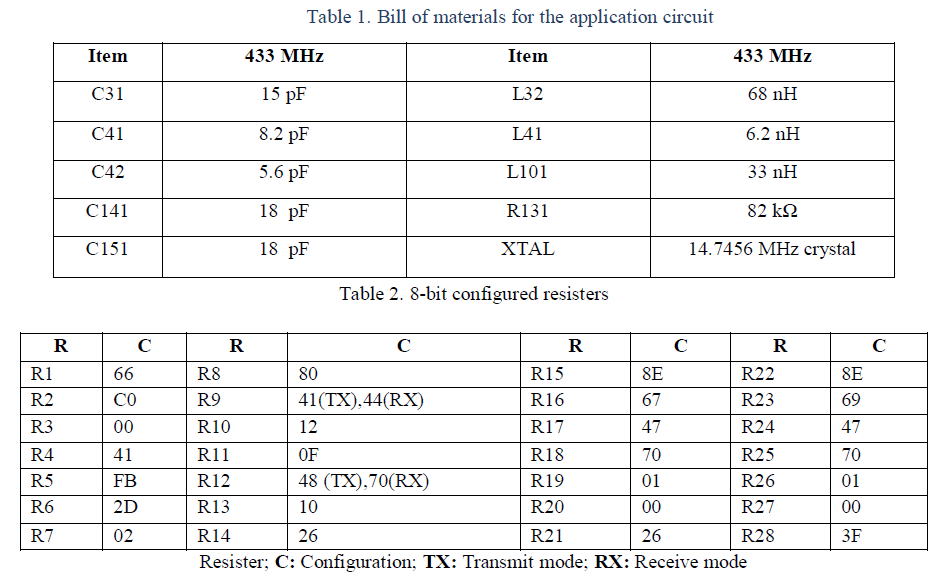 |
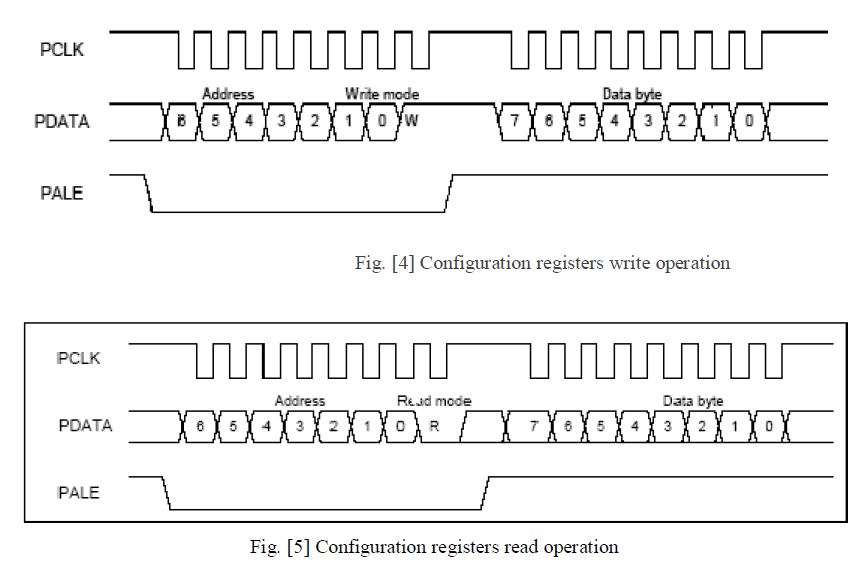 |
III. RESULTS AND CONCLUSION |
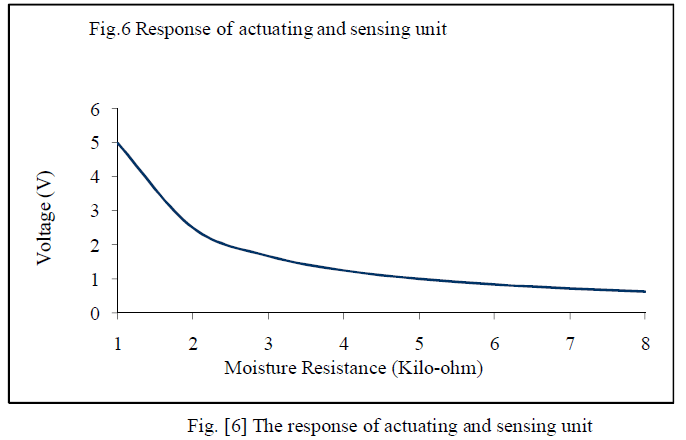 |
| Here by controlling soil moisture of a field remotely and comparing it with the available data, effective utilization of water source is achieved through RF transceiver module. Hence it saves energy. Due to availability of previous data optimization of irrigation system is possible. |
| Initial investment is more but gives better yield. Utilization of the system in co-operative basis avoids the high initial cost. |
References |
|